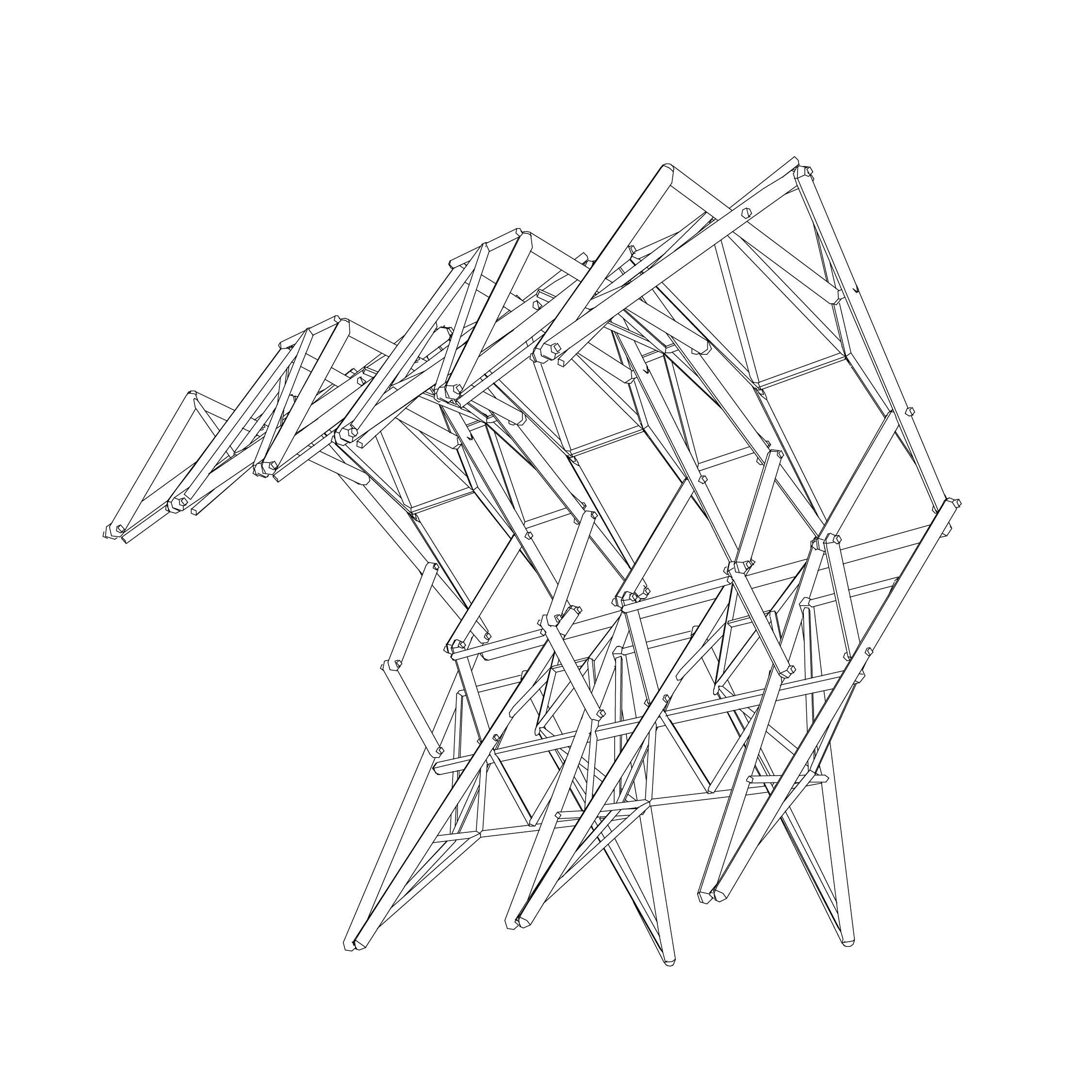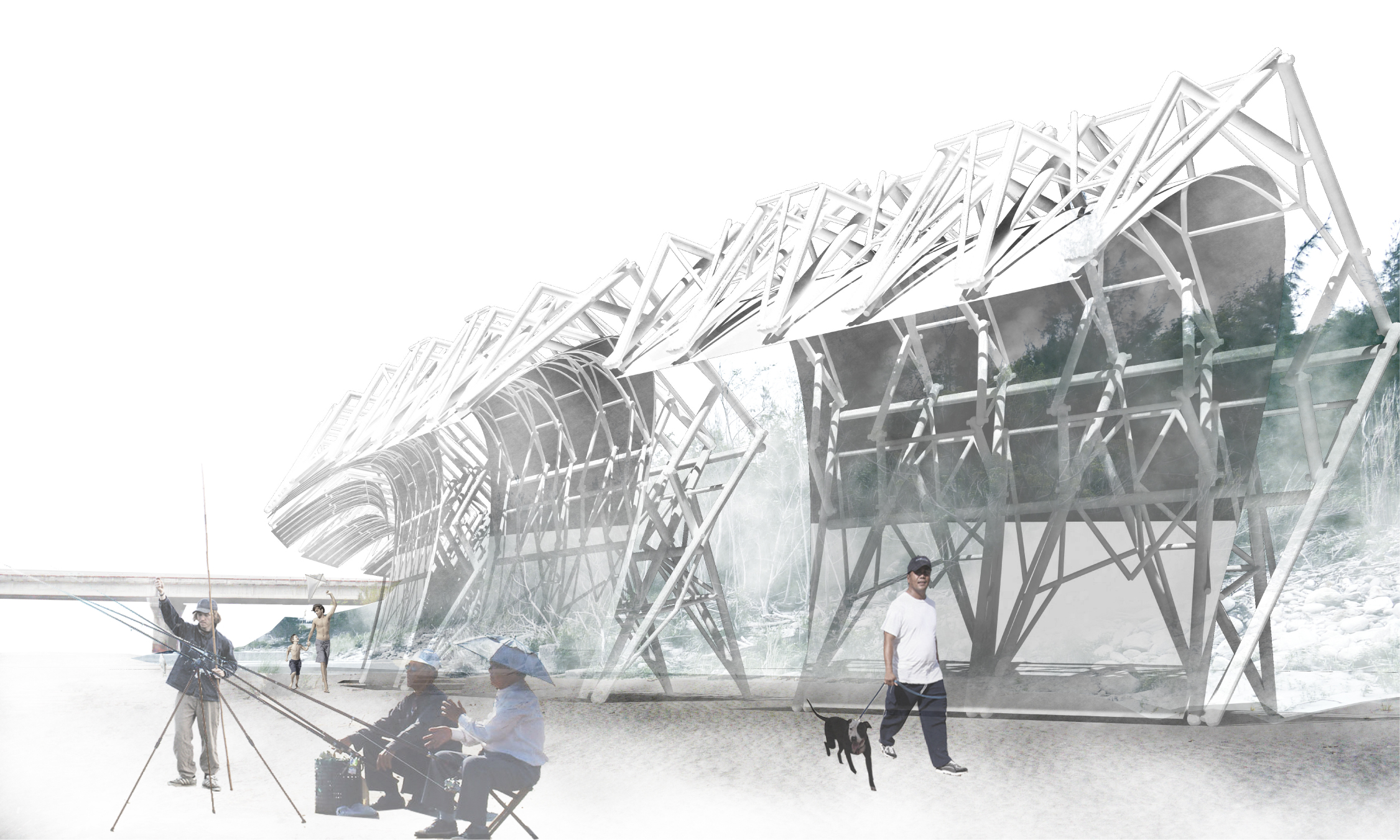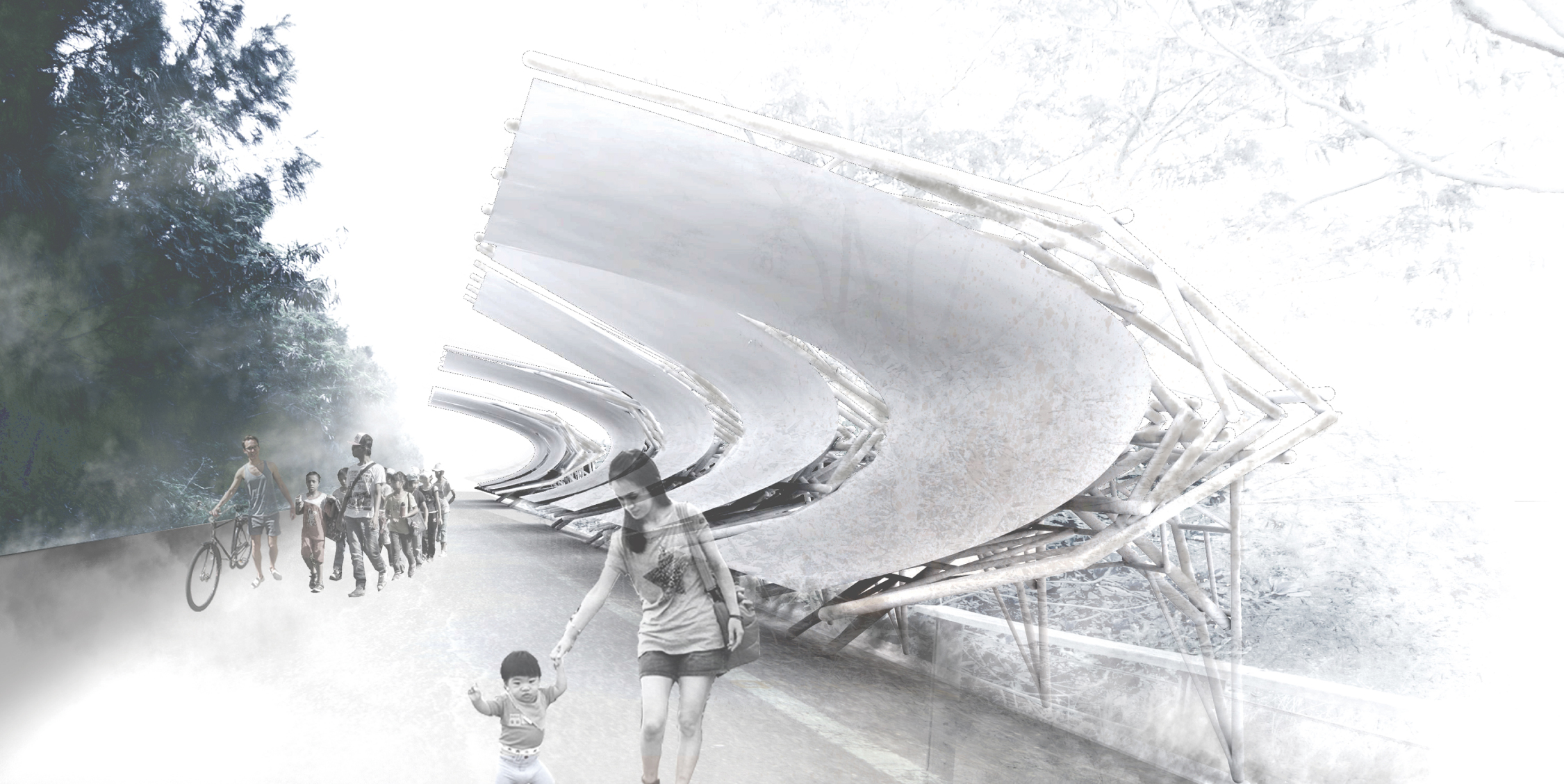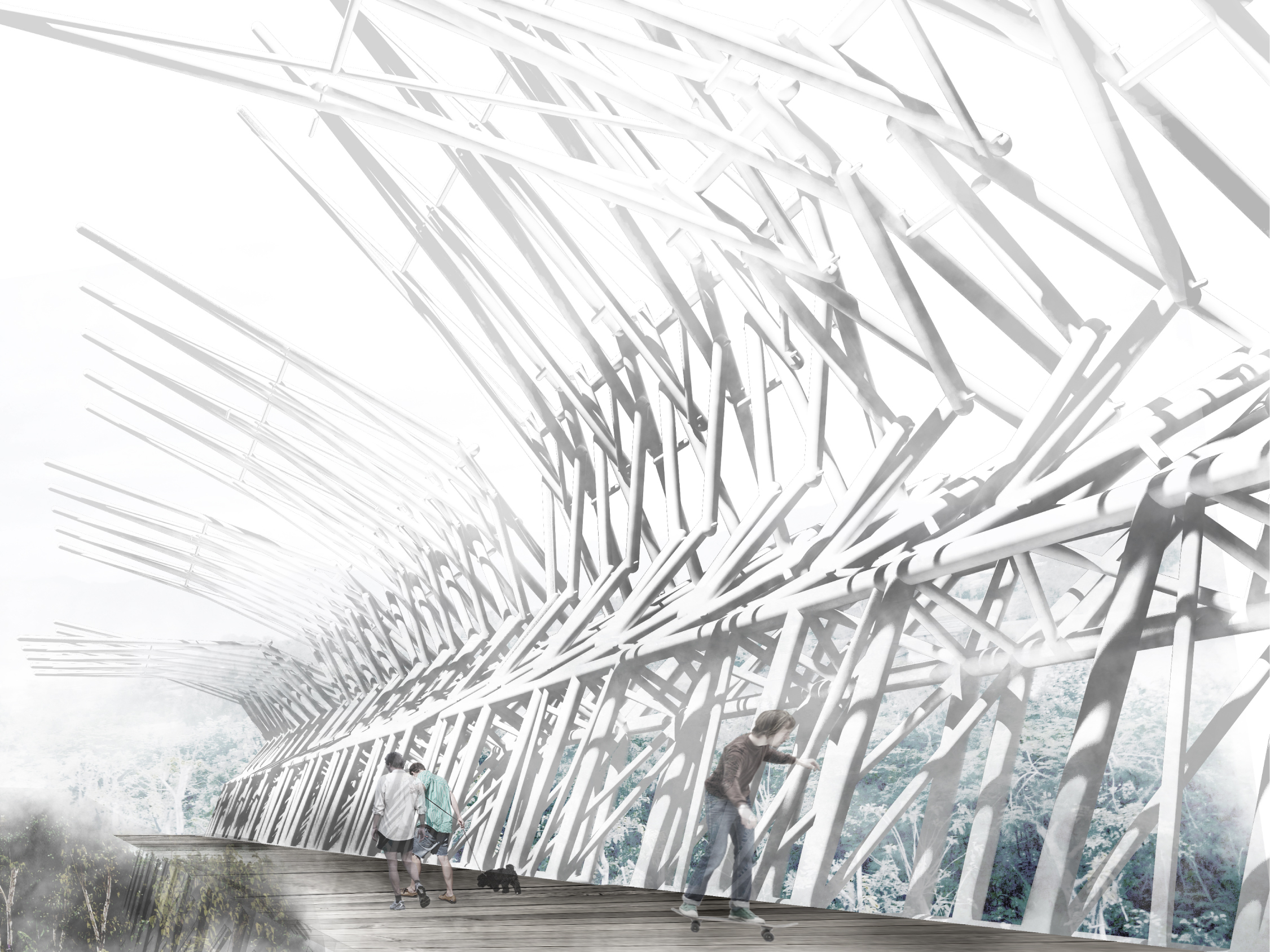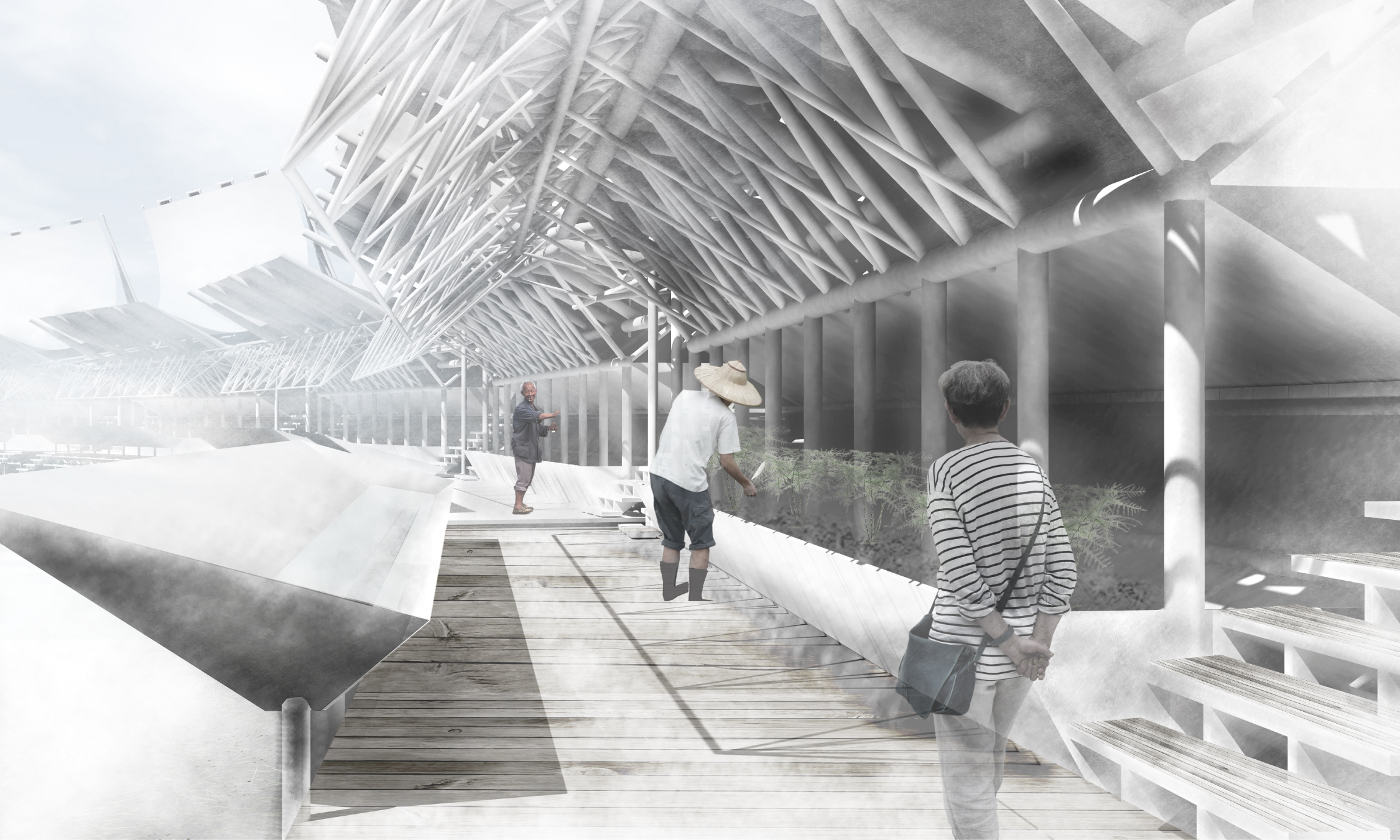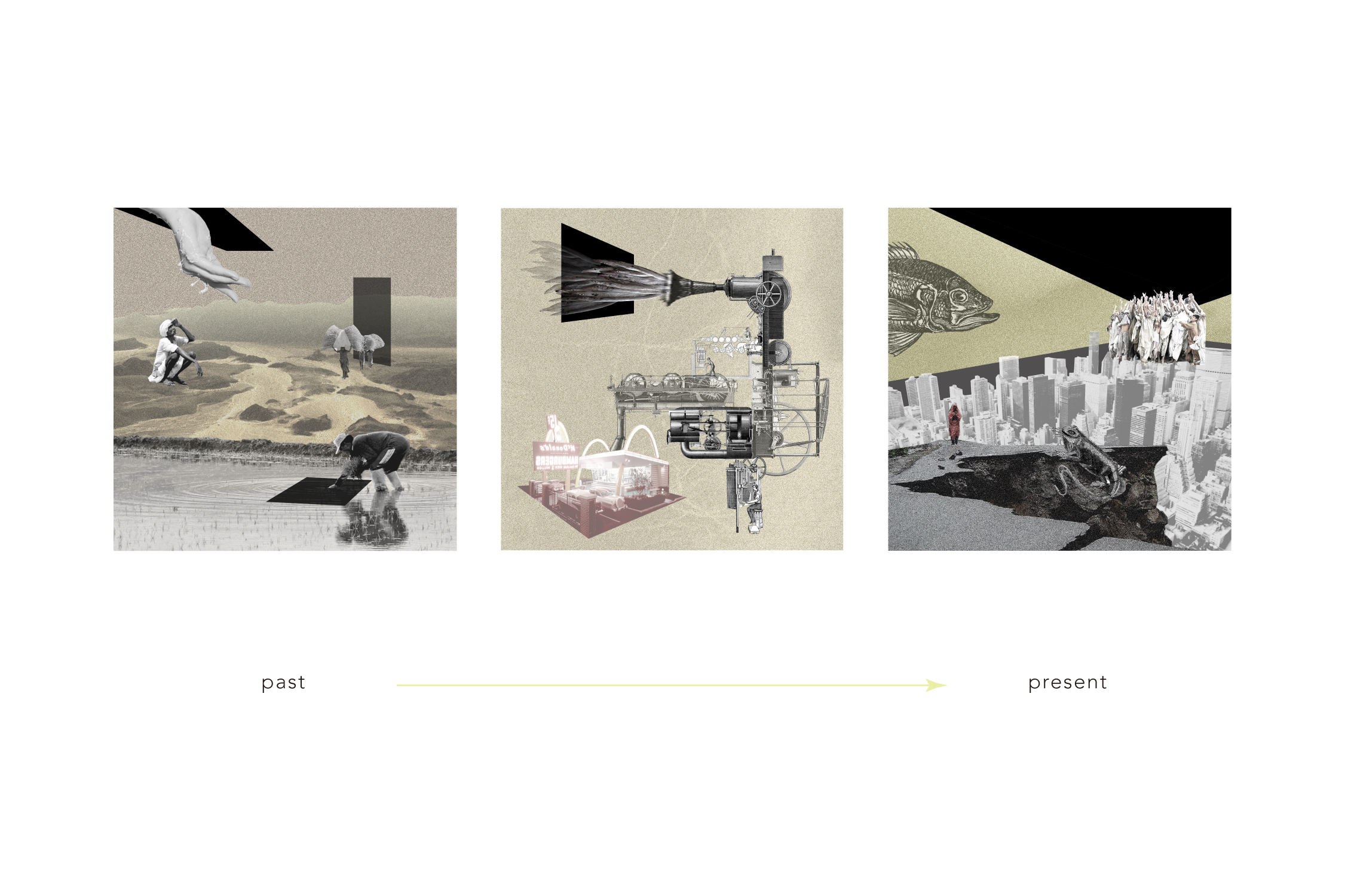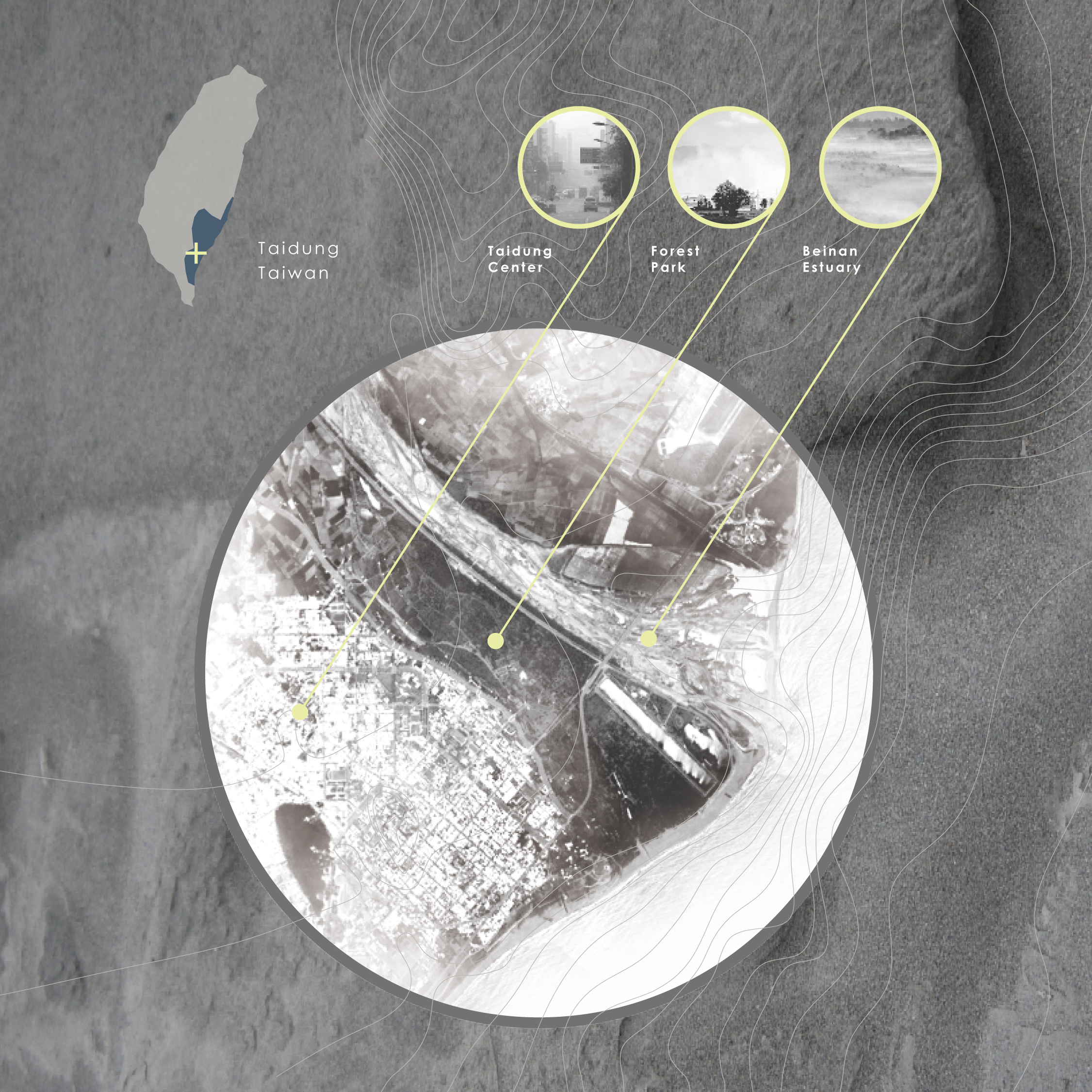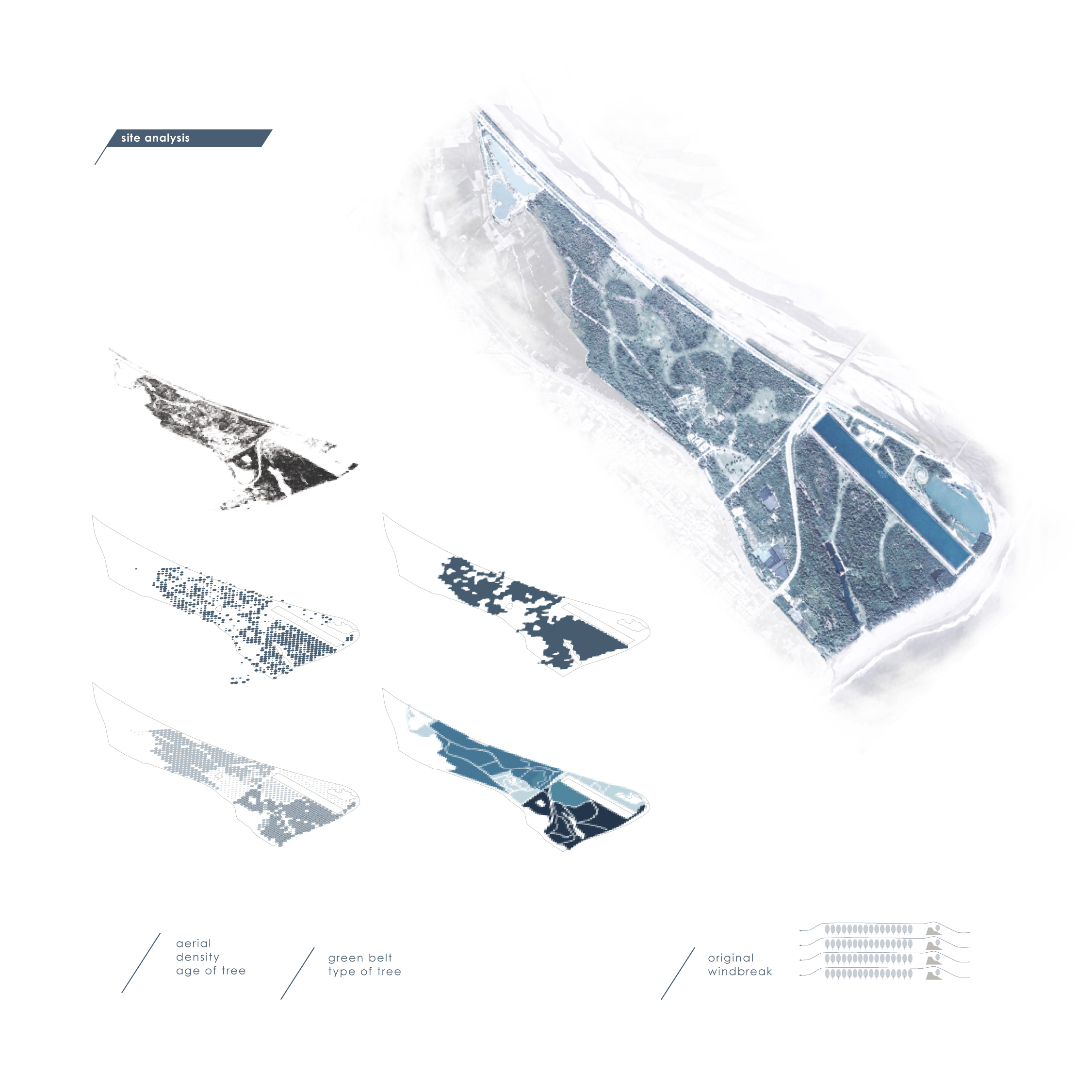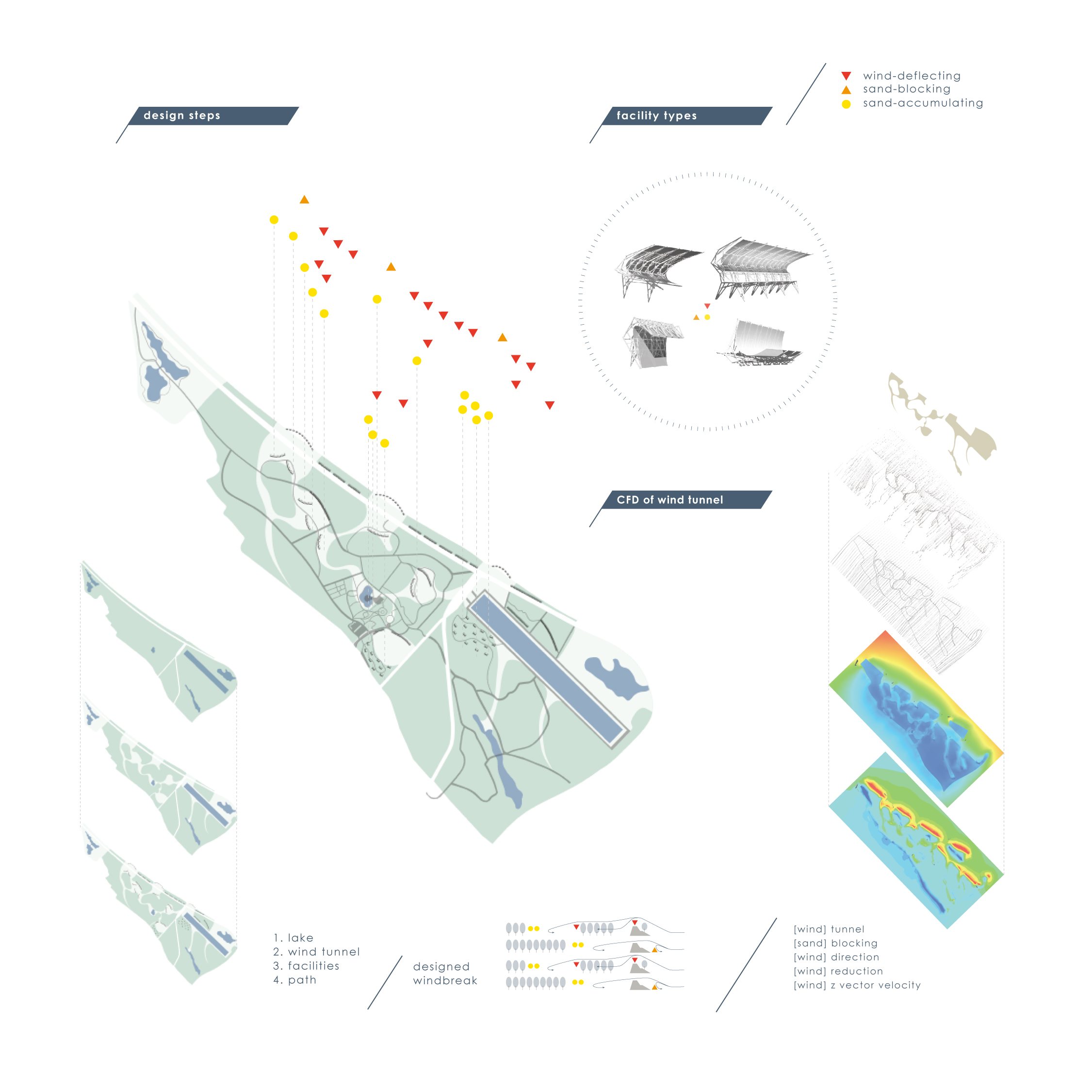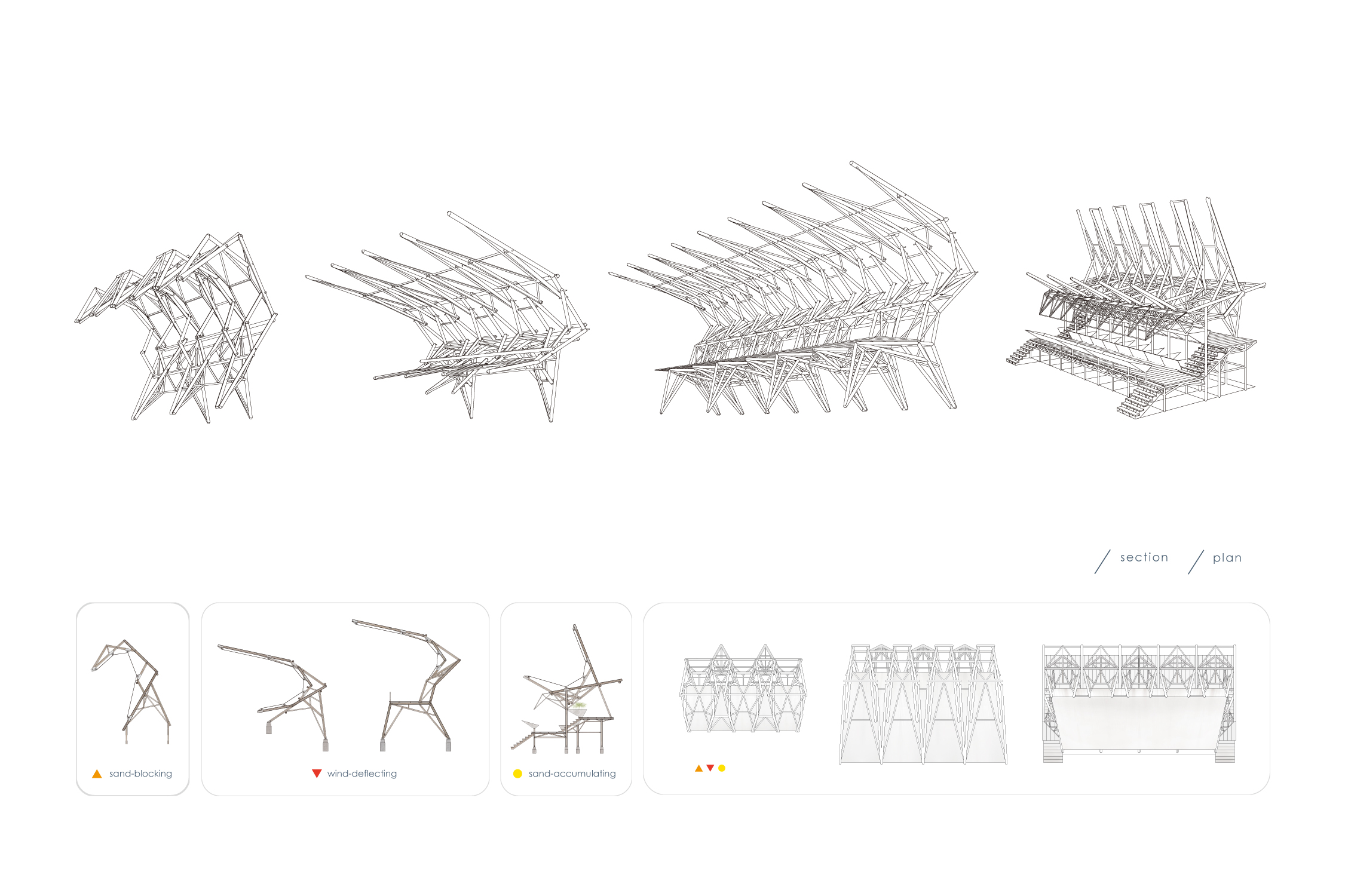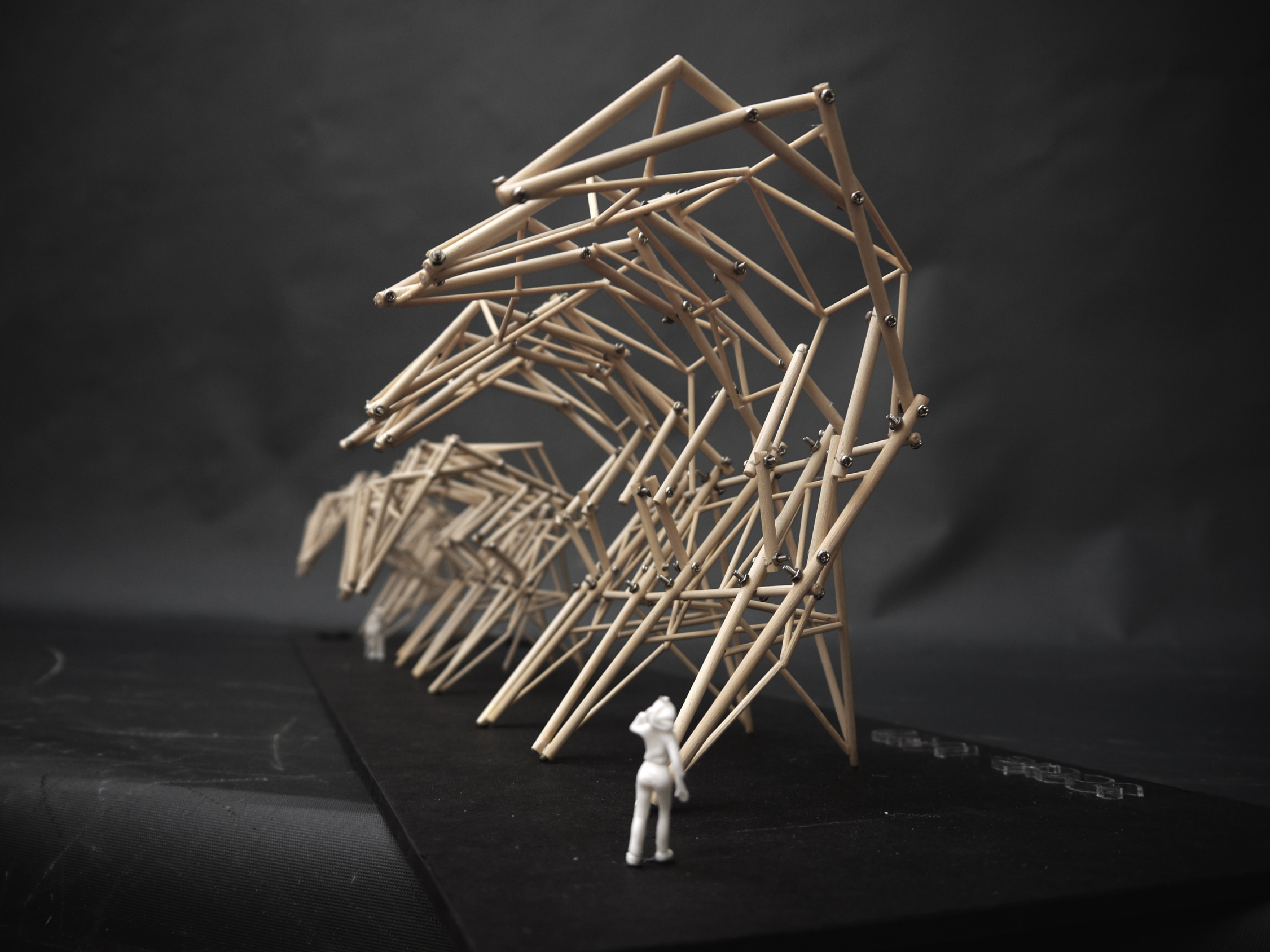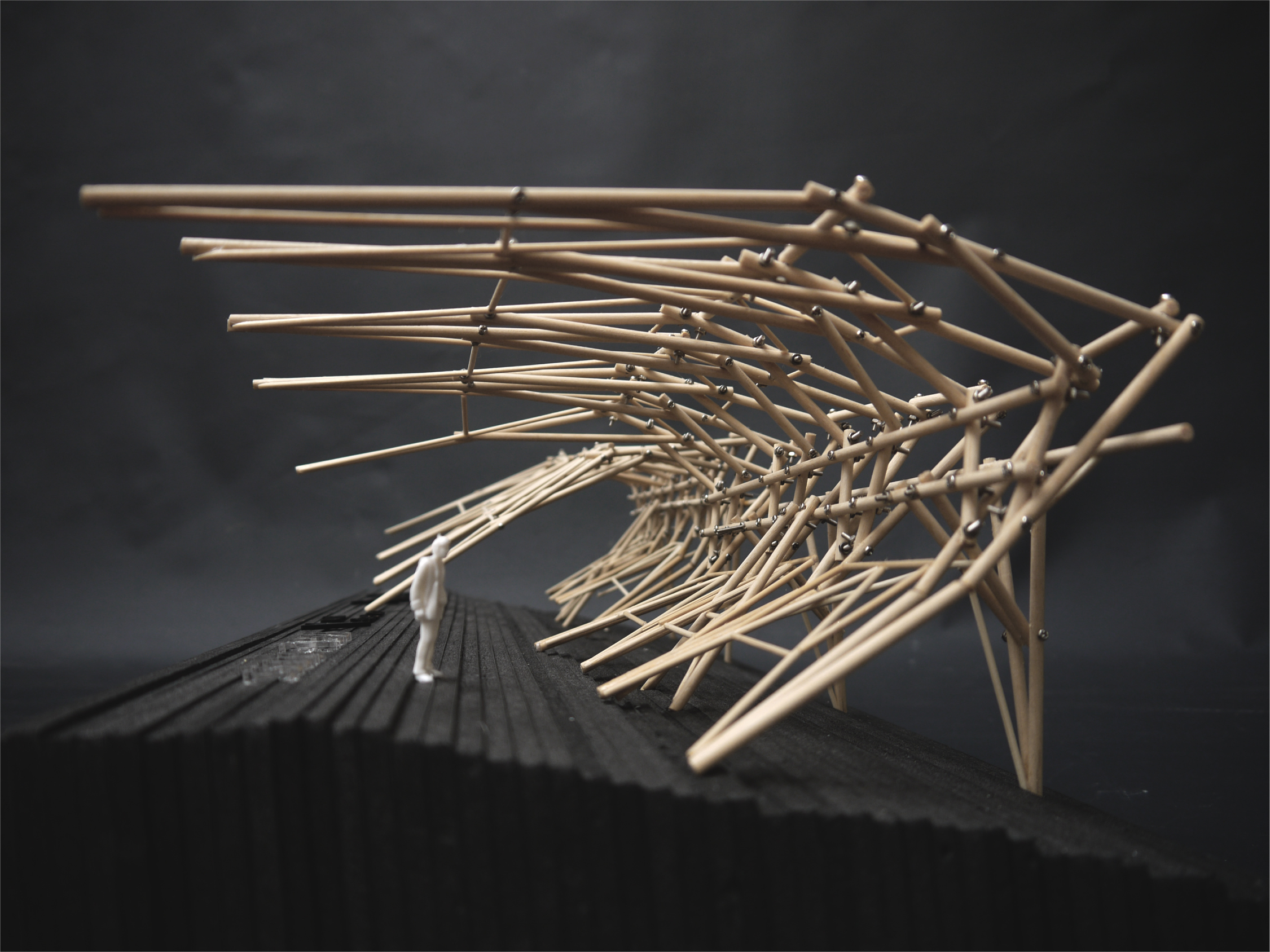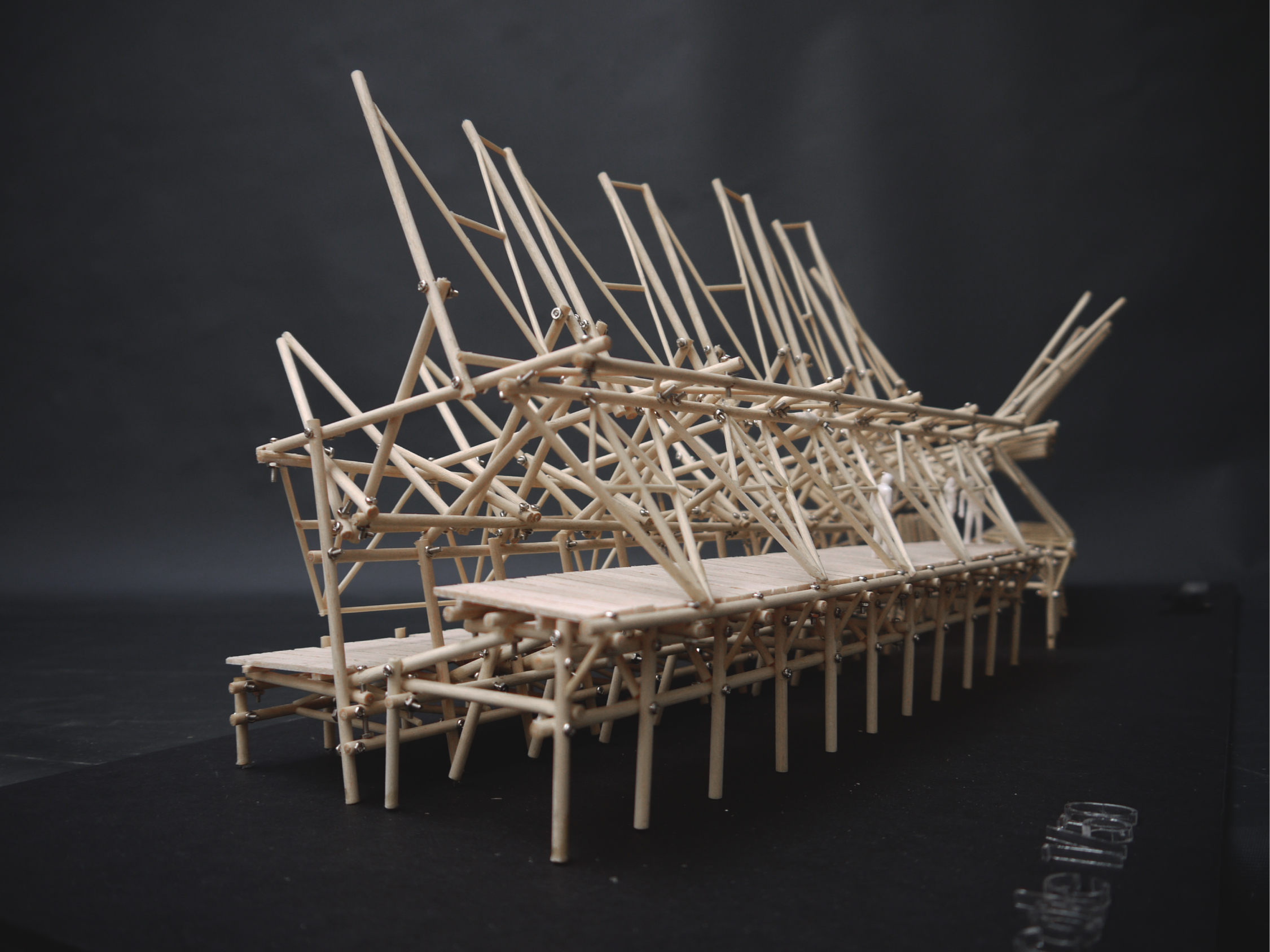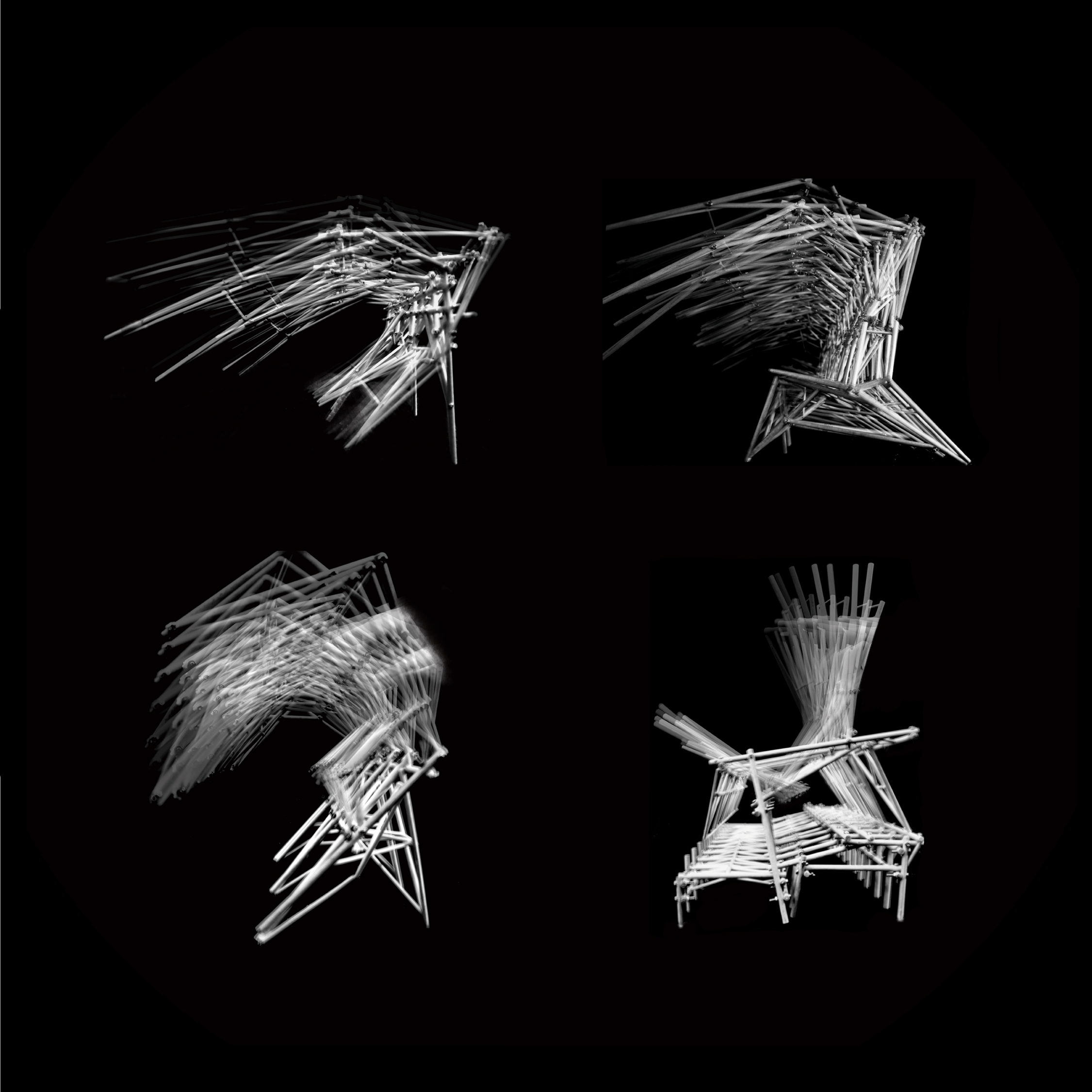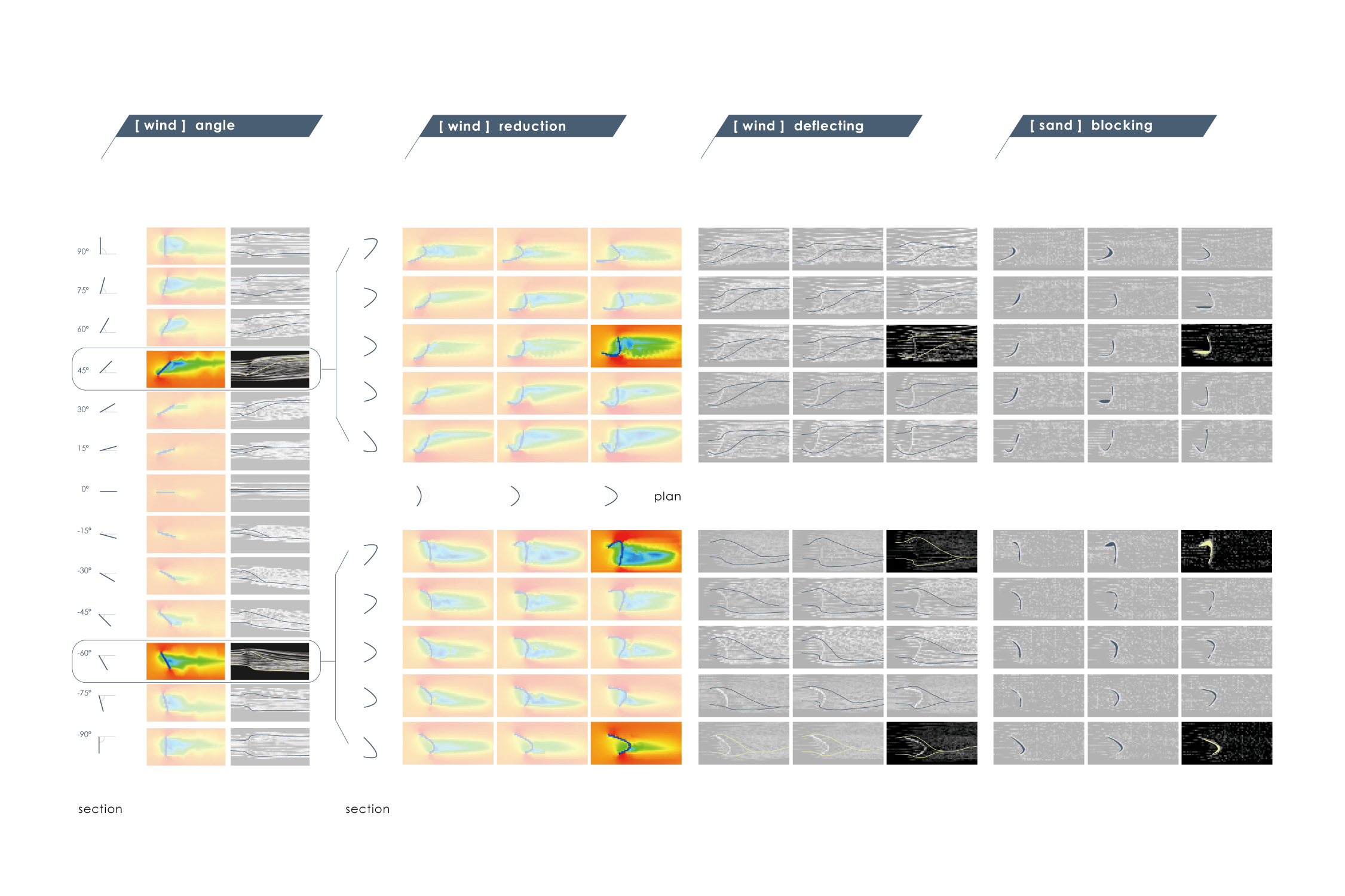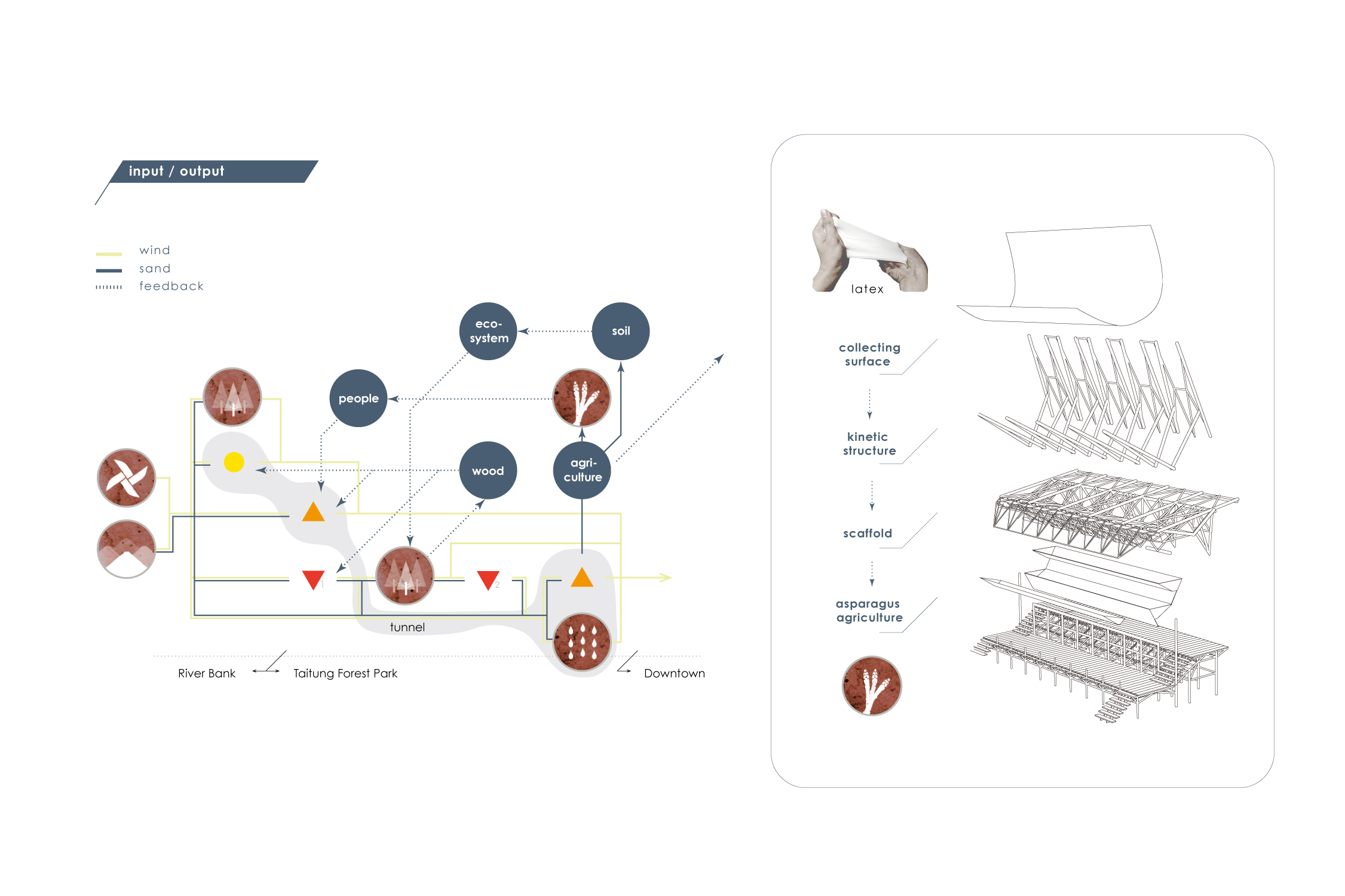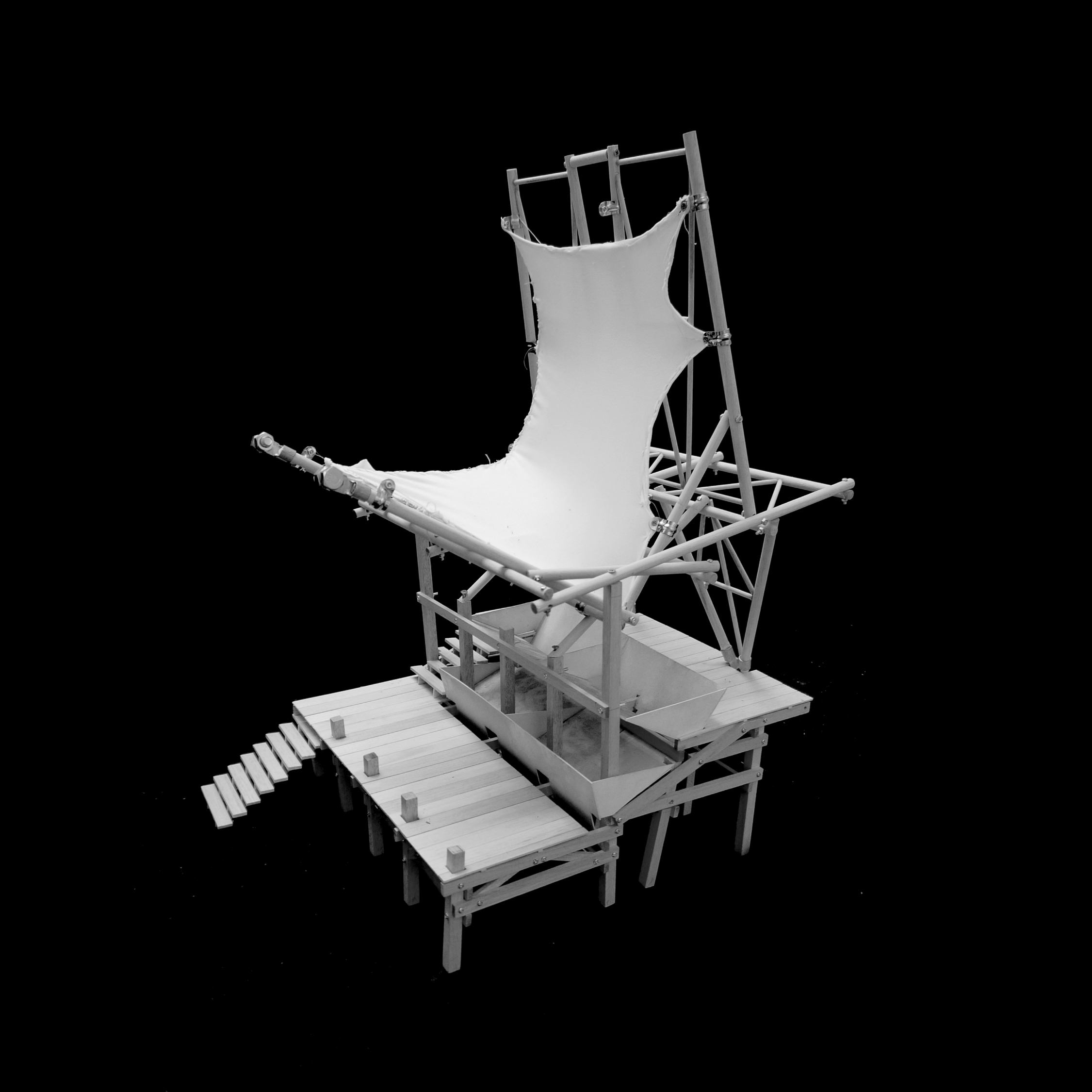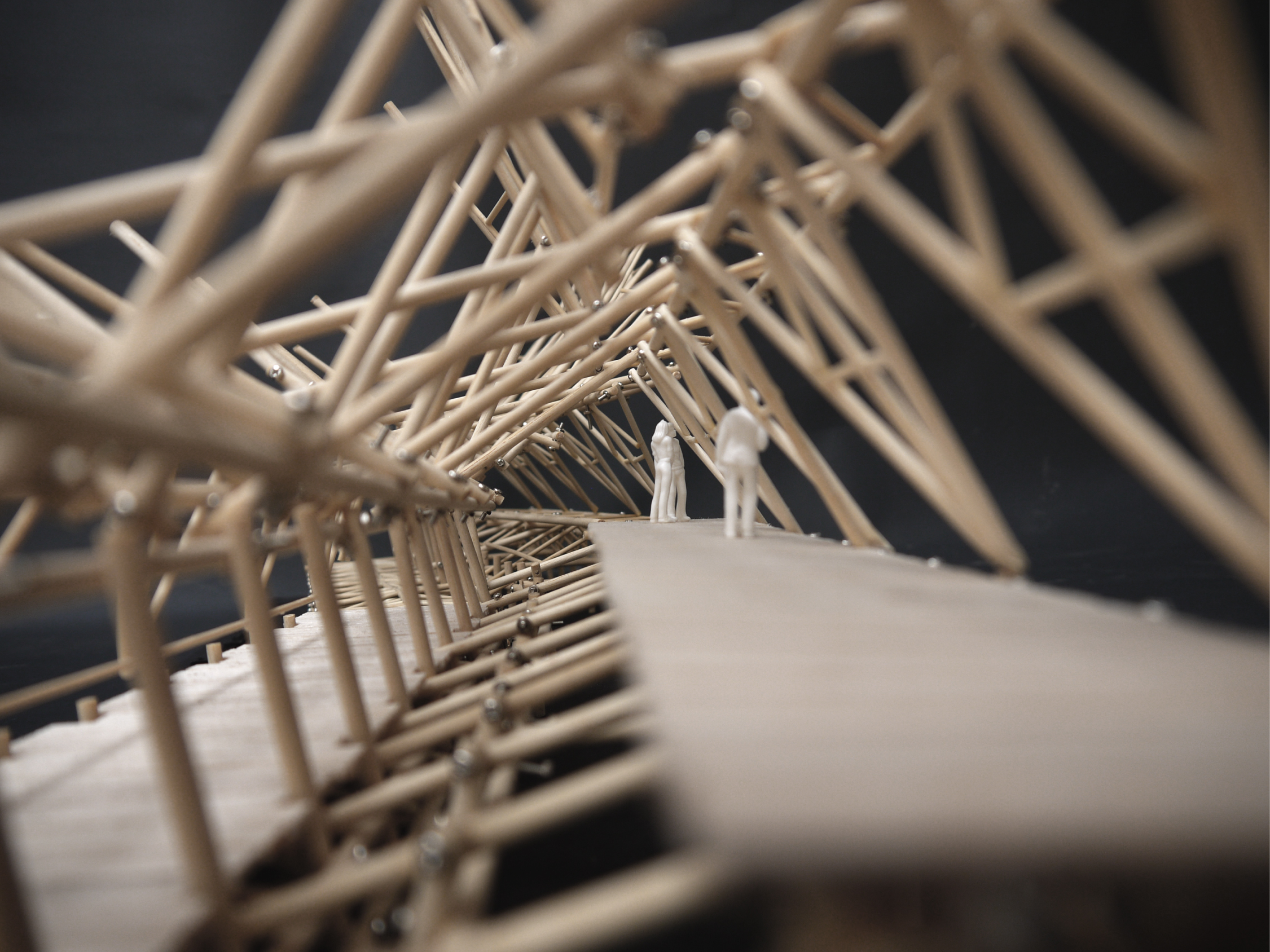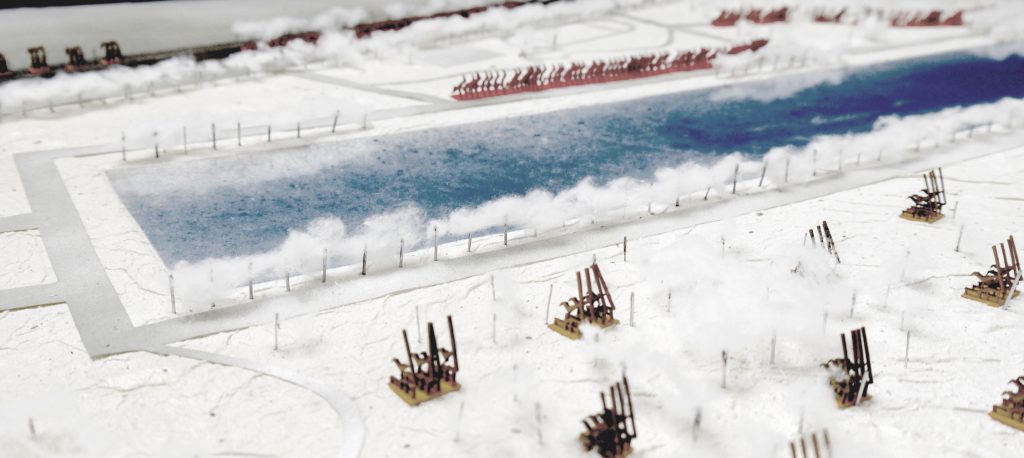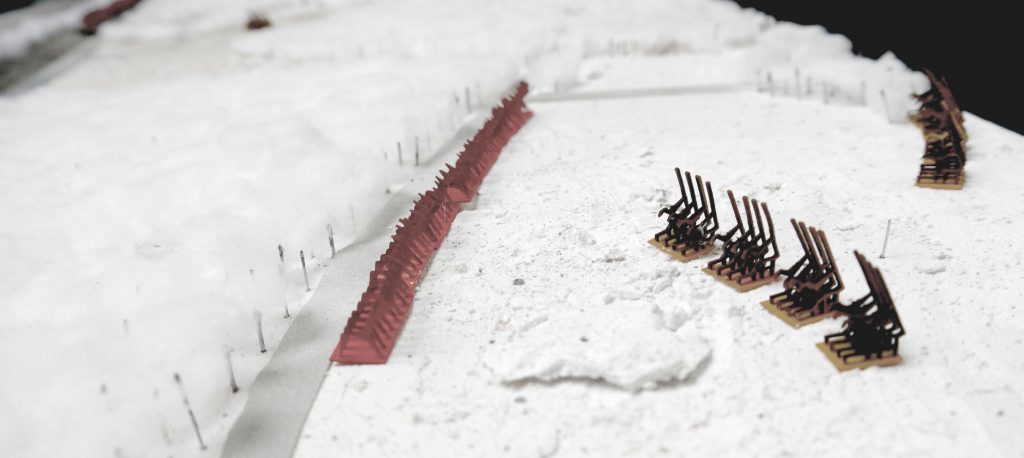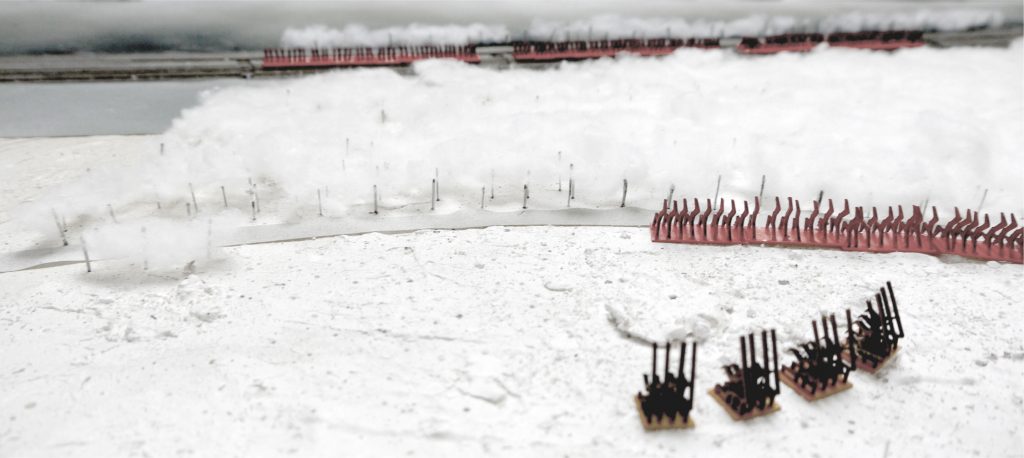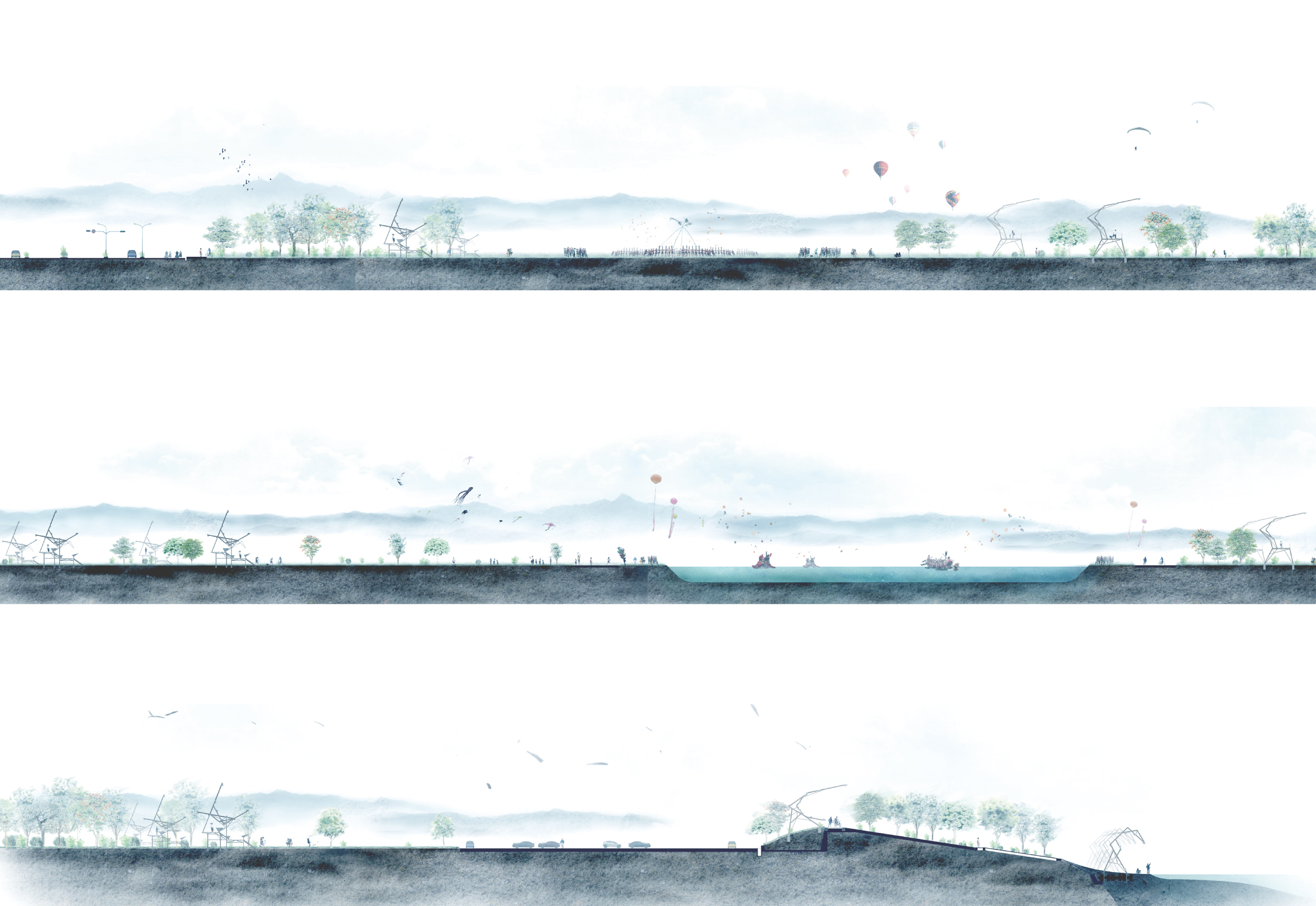Wind-Break-ing
/ 2014
Wind-Break-ing project was created specifically to ease the wind-blown sand phenomenon that occurs in Taitung, a city in east Taiwan, through numerous kinetic attributes. Wind-blown sand is the detrimental result of the seasonal interaction between water, sand, and wind. There is a regular occurrence of this in the dry season ( September to February ), when the northeast monsoon is present.
One of the most efficient solutions is a 280 hectare artificial wind break situated at the north of the city in Taitung Forest Park. However, its efficiency leaves room for improvement. Unlike water, wind is a complicated element with three-dimensional movements. Instead of partially blocking the airflow, it is more important to simulate a pressure-gradient wind force by creating differences in velocity or pressure.
In order to improve the air-filtering capacity of this park, Wind-Break-ing proposes to create wind tunnels to guide the airflow and install kinetic facilities for blocking blown, abrasive sands. To develop a proper strategy for the design, CFD ( Computational fluid dynamics ) software was used to simulate the wind field. Ultimately, three types of structures were created for deflecting the wind, blocking the sand, and accumulating the sand.
By building a more effective interface with nature, the interactivity between the environment and its habitants evolves into a harmonious state. A new, symbiotic balance is finally achieved as people sincerely resense and intuitively readapt to their surroundings.
instructor
Chao-hsien Yeh ( 葉朝憲 )
photo
Yunya Hung
category
